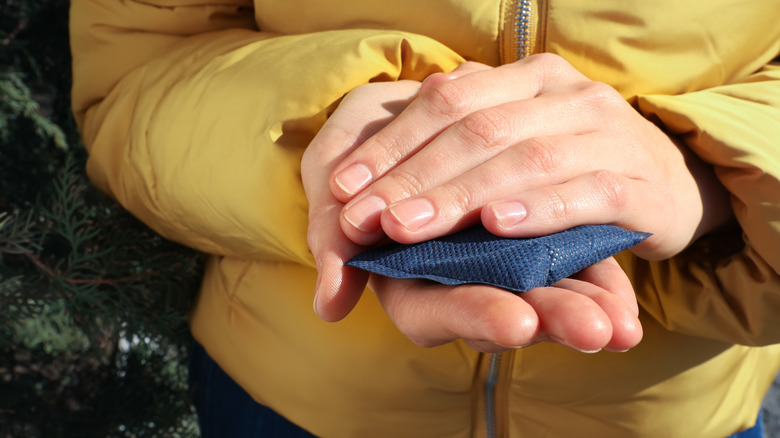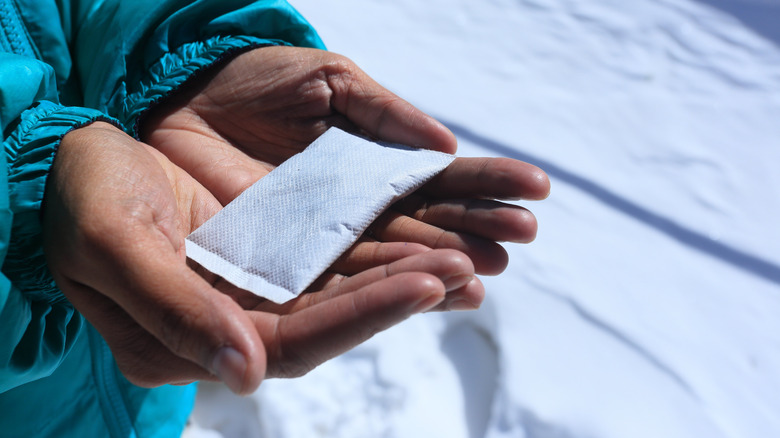Can Hand Warmers Get Hot Enough To Burn You?
Winter can be rough, there's no doubt about that. Every year in the United States, according to the New York City Department of Public Health, about 1,300 Americans on average die of exposure to the cold. Other winter deaths are attributable indirectly to the season: heart attacks suffered while shoveling snow, or fatal slips and falls on the ice. And of course, winter brings with it more than its share of injuries, such as those suffered when falling on the ice, or in auto accidents, or even fatalities caused by falling icicles.
It may seem counterintuitive, but winter can also be a season of burns. Getting too careless with a fireplace or furnace can end poorly, for example. However, there's another way to get burned in the winter, and the thing that burns you may even be sitting in your pocket, or the glove box in your car, as you read these words.
Yes, those chemical hand warmers can burn you
Chemical hand warmers — those little packets that you can purchase at your favorite store for a few bucks — work by producing an exothermic reaction, according to Chemical & Engineering News. Long story short, when you follow the directions on the package, you expose chemicals to each other, and a reaction that produces heat takes place. Indeed, it's quite a lot of heat: they can reach up to 135 degrees Fahrenheit. That's about 20 degrees warmer than what's needed to produce first-degree burns, according to WHNT, and is getting into second-degree burn territory.
What's more, in certain situations, those devices can get even hotter, up to 185 degrees. It's not unheard of for people to suffer gruesome injuries from hand warmers. For example, as Contemporary Pediatrics notes, in 2019 a 9-year-old girl presented in an emergency room with blistering on her skin near her ankle. Doctors determined she'd suffered a second-degree burn from a disposable, chemical hand warmer she'd been using in her boots.

